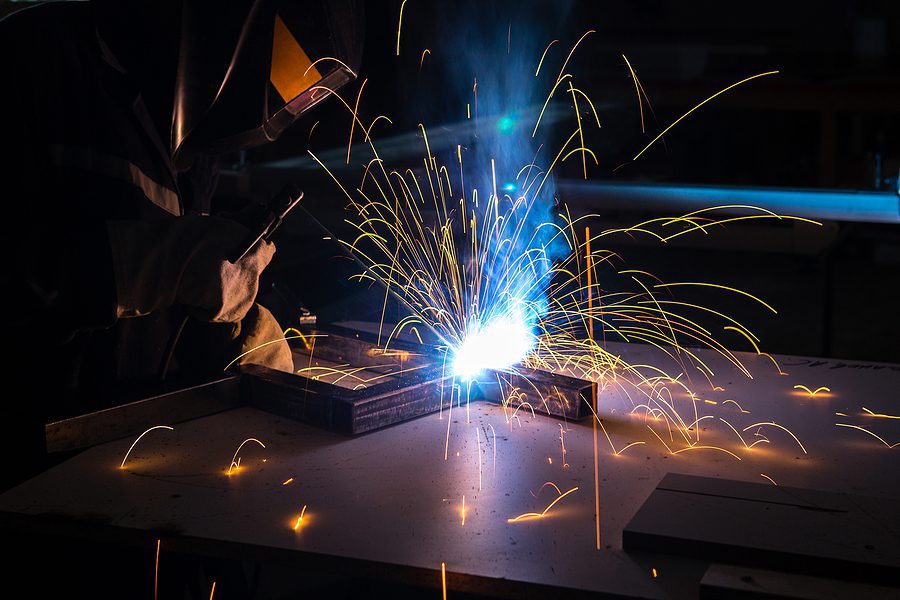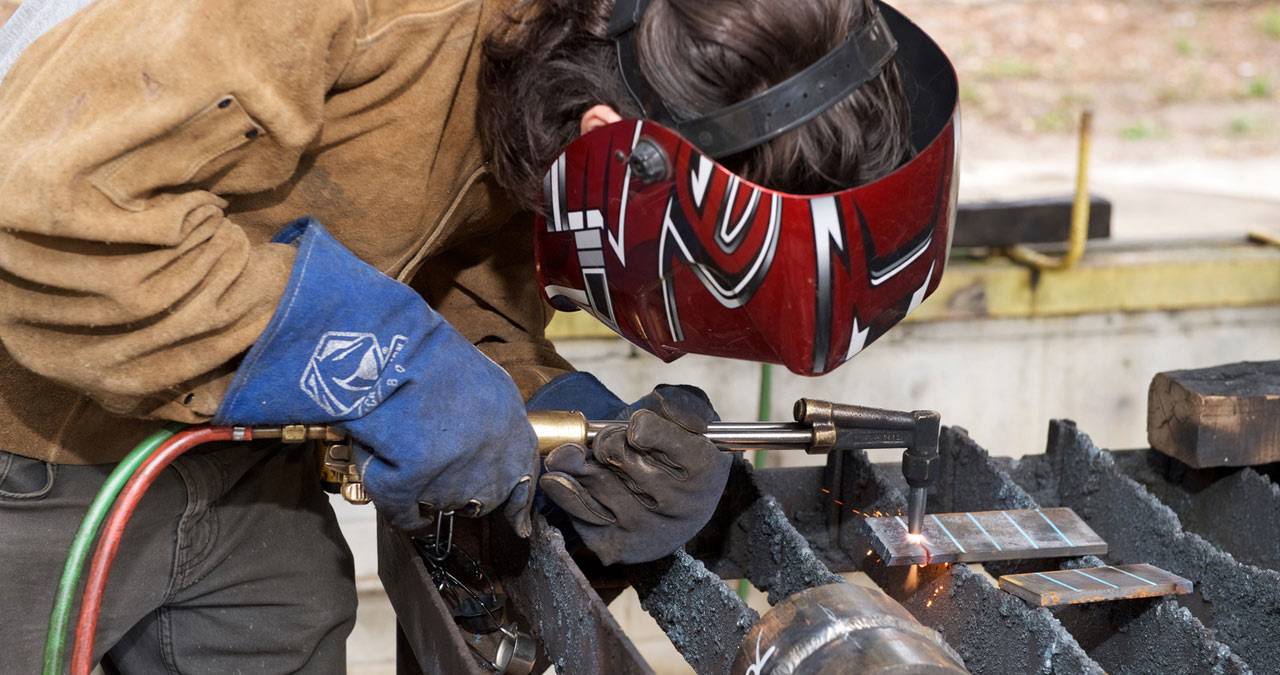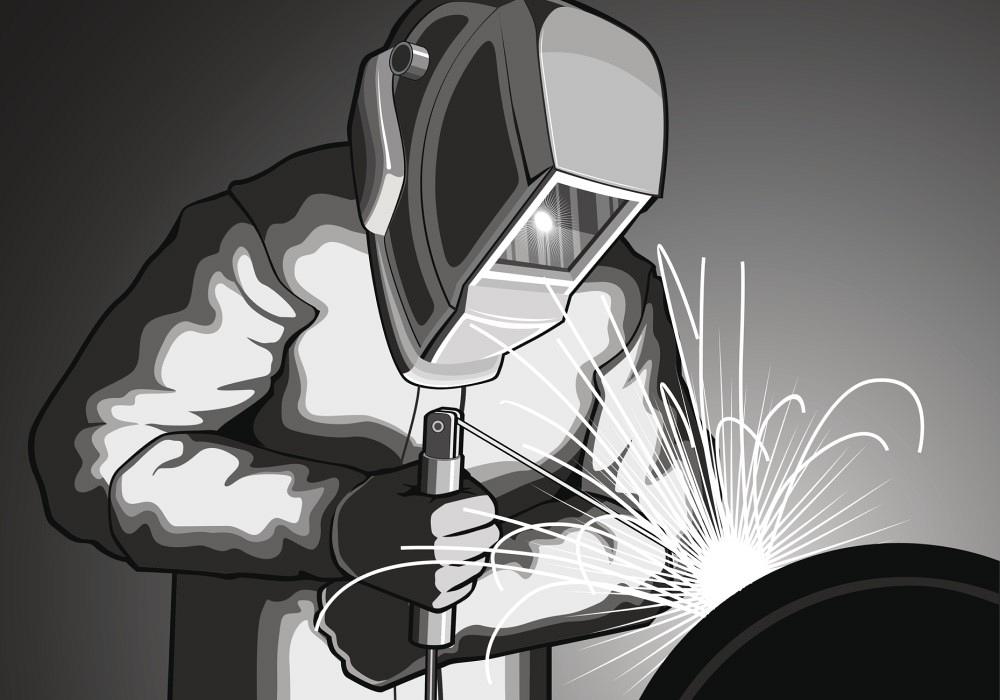Common Welding Fixing Issues and Just How to Address Them Efficiently
Welding repairs commonly encounter a series of concerns that can endanger the integrity of the end product. Typical troubles consist of poor infiltration, porosity, and imbalance, among others. Each problem offers unique difficulties that call for particular methods for resolution. Recognizing these issues is vital for welders intending to improve their outcomes and skills. This conversation will certainly discover these typical welding repair work issues and effective approaches to address them.
Poor Penetration
Inadequate penetration takes place when the weld metal stops working to completely fuse with the base product, resulting in weak joints and potential architectural failures. This problem frequently originates from inadequate heat input, wrong electrode angle, or inappropriate welding rate. Welders might run into inadequate penetration as a result of a miscalculation of the needed criteria for a certain material density or type. Furthermore, contamination on the base material's surface can prevent reliable bonding, aggravating the problem. To attend to inadequate penetration, welders must ensure suitable settings on their devices and keep a tidy job surface area. Regular assessment of welds is advised to identify any kind of deficiencies early, enabling timely improvements and the avoidance of compromised architectural integrity in bonded assemblies.
Porosity
Porosity is a common defect in welded joints that manifests as little gas bubbles entraped within the weld steel. This problem can compromise the honesty of the weld, bring about reduced strength and possible failing under tension. Montana Mobile Welding and Repair Belgrade Fabrication. Porosity usually develops from contamination, wetness, or inappropriate welding strategies, which allow gases to leave right into the liquified weld pool. To address porosity, welders need to assure appropriate surface area prep work, maintain a clean functioning setting, and use appropriate welding criteria. Furthermore, selecting the ideal filler material and securing gas can mitigate gas entrapment. Regular evaluation and testing of welds can assist recognize porosity early, assuring prompt restorative activities are taken, consequently preserving the top quality and dependability of the welded framework
Misalignment
Imbalance in welding can develop from various elements, consisting of improper configuration and thermal expansion. Comprehending the source is vital for reliable resolution. Several improvement techniques are available to straighten parts and ensure structural stability.
Sources of Misalignment
Welding misalignment usually stems from a selection of underlying problems that can compromise structural stability. One main reason is improper fit-up of elements before welding, which can result in spaces and uneven surfaces. Variants in thermal growth during the welding procedure can also lead to distortion, especially if the materials being signed up with have different coefficients of expansion. Furthermore, poor securing and fixturing may fail to hold components firmly in place, causing activity throughout welding. Inadequately conserved devices, including welding equipments and devices, might present inconsistencies in the weld grain, additional contributing to imbalance. Driver mistake, stemming from inadequate training or experience, can also play a substantial duty in producing misaligned welds.

Improvement Strategies Offered
Dealing with imbalance efficiently requires a mix of restorative strategies tailored to the details concerns handy. One usual technique is the use of jigs or components to hold components in the appropriate position throughout welding, ensuring regular placement. Furthermore, pre-heating the products can help minimize distortion and enhance fit-up. For significant misalignment, mechanical realignment methods, such as making use of hydraulic jacks or clamps, can be used to correct the placement prior to welding. Post-weld warm therapy may additionally be necessary to alleviate anxieties triggered by misalignment. Lastly, careful inspection and modification throughout the configuration phase can prevent misalignment concerns from becoming substantial troubles, promoting a smoother welding process and improving general architectural integrity.
Distortion
Distortion is a typical obstacle in welding that can emerge from different factors, consisting of unequal heating & cooling. Understanding the root causes of distortion is essential for implementing effective avoidance techniques. Resolving this problem not just enhances architectural integrity but also boosts the total quality of the weld.
Reasons for Distortion
When subjected to the extreme warmth of welding, products often undertake adjustments that can result in distortion. This sensation mostly emerges from thermal expansion and contraction during the welding procedure. As the weld location warms up, the material broadens; upon air conditioning, it gets, which can create interior tensions. In enhancement, uneven home heating across a work surface can intensify these stress and anxieties, leading to bending or bending. The type of material additionally plays a significant role; metals with varying thermal conductivity and coefficients of expansion may react in a different way, resulting in uncertain distortions. Inadequate joint layout and inadequate fixturing can contribute to misalignment throughout welding, enhancing the chance of distortion. Comprehending these reasons is vital for effective welding repair and prevention techniques.
Prevention Techniques
Efficient prevention strategies for distortion throughout welding concentrate on managing warm input and guaranteeing proper joint layout. Keeping a regular warm input assists to decrease thermal development and tightening, which can result in distortion. Using methods such as pre-heating the work surface can additionally lower the temperature level slope, advertising consistent heating. Additionally, choosing suitable joint designs, such as T-joints investigate this site or lap joints, can enhance stability and decrease tension focus. Executing proper fixturing to secure the workpieces in position even more aids in keeping positioning during the welding process. Staggered welding sequences can distribute warm a lot more uniformly, protecting against local distortion. By applying these techniques, welders can substantially decrease the probability of distortion and enhance the total high quality of their welds.
Fracturing
Fracturing is a common issue run into in welding repair services, usually arising from numerous variables such as incorrect cooling prices, material choice, or insufficient joint prep work. The occurrence of splits can greatly jeopardize the honesty of the weld, resulting in potential failures throughout operation. To resolve this issue, welders have to initially examine the source, guaranteeing that products work and properly selected for the specific application. In addition, managing the air conditioning price throughout the welding procedure is necessary; rapid cooling can induce stress and result in breaking. Correct joint layout and preparation additionally contribute to reducing the threat. Applying these methods can enhance weld quality and sturdiness, inevitably reducing the likelihood of fracturing in completed weldments.

Insufficient Combination
A considerable issue in welding repair work is incomplete fusion, which happens when the weld steel does not sufficiently bond with the base product or previous weld passes - Belgrade. This problem can cause weaknesses in the joint, potentially jeopardizing the stability of the welded structure. Aspects contributing to incomplete combination include insufficient warmth input, incorrect welding strategy, and contamination of the surface areas being joined. To address this issue successfully, welders need to assure proper pre-weld cleansing and surface prep work, as well as readjust their welding parameters to accomplish adequate infiltration you can try here and blend. Regular assessment during the welding process can additionally aid determine incomplete blend early, enabling timely corrective steps to enhance the overall high quality of the weld
Overheating
While welding repair work can enhance architectural integrity, overheating offers a considerable obstacle that can bring about product destruction. Excessive warm during welding can alter the mechanical buildings of steels, resulting in decreased stamina, raised brittleness, and warping. This phenomenon is specifically crucial in high-stress applications where structural reliability is paramount. Identifying overheating can involve visual evaluations for staining or distortion, in addition to keeping an eye on temperature throughout the welding procedure. To alleviate the risks Continued connected with overheating, welders must use appropriate strategies, such as regulating warmth input, changing travel speed, and using ideal filler materials. Additionally, implementing pre- and post-weld warmth therapies can assist bring back material residential properties and improve the general high quality of the fixing, ensuring lasting performance and security.
Often Asked Concerns
What Are the Typical Indications of a Welding Flaw?

Exactly How Can I Examine My Welds for Top quality?
To examine welds for high quality, one can use aesthetic assessments, ultrasonic testing, and radiographic methods. Each method assures structural honesty, recognizes issues, and confirms adherence to defined requirements, eventually boosting the integrity of the bonded joints.
What Security Safety Measures Should I Take While Welding?
When welding, one need to focus on safety and security by wearing ideal individual safety equipment, guaranteeing proper air flow, protecting flammable products away, maintaining a tidy work space, and recognizing environments to protect against injuries and accidents.
Can I Repair a Weld Without Redesigning the Entire Joint?
Fixing a weld without redesigning the entire joint is feasible, depending on the damages (Montana Mobile Welding and Repair Belgrade Fabrication). Techniques such as grinding, including filler product, or using a welding procedure can successfully address particular problems while preserving the bordering structure
What Equipment Are Essential for Reliable Welding Fixes?
Essential devices for effective welding repair services include a welding device, wire brush, grinder, safety equipment, clamps, and filler products. Each tool plays a crucial role in guaranteeing quality and safety during the repair service process. Porosity generally occurs from contamination, dampness, or incorrect welding strategies, which allow gases to run away into the molten weld swimming pool. Poorly conserved equipment, including welding devices and tools, may present variances in the weld bead, further adding to imbalance. When subjected to the intense warm of welding, materials typically undergo changes that can lead to distortion. Breaking is a common problem experienced in welding fixings, usually resulting from numerous elements such as incorrect air conditioning prices, material selection, or inadequate joint preparation. A significant problem in welding repairs is incomplete blend, which happens when the weld steel does not adequately bond with the base product or previous weld passes.